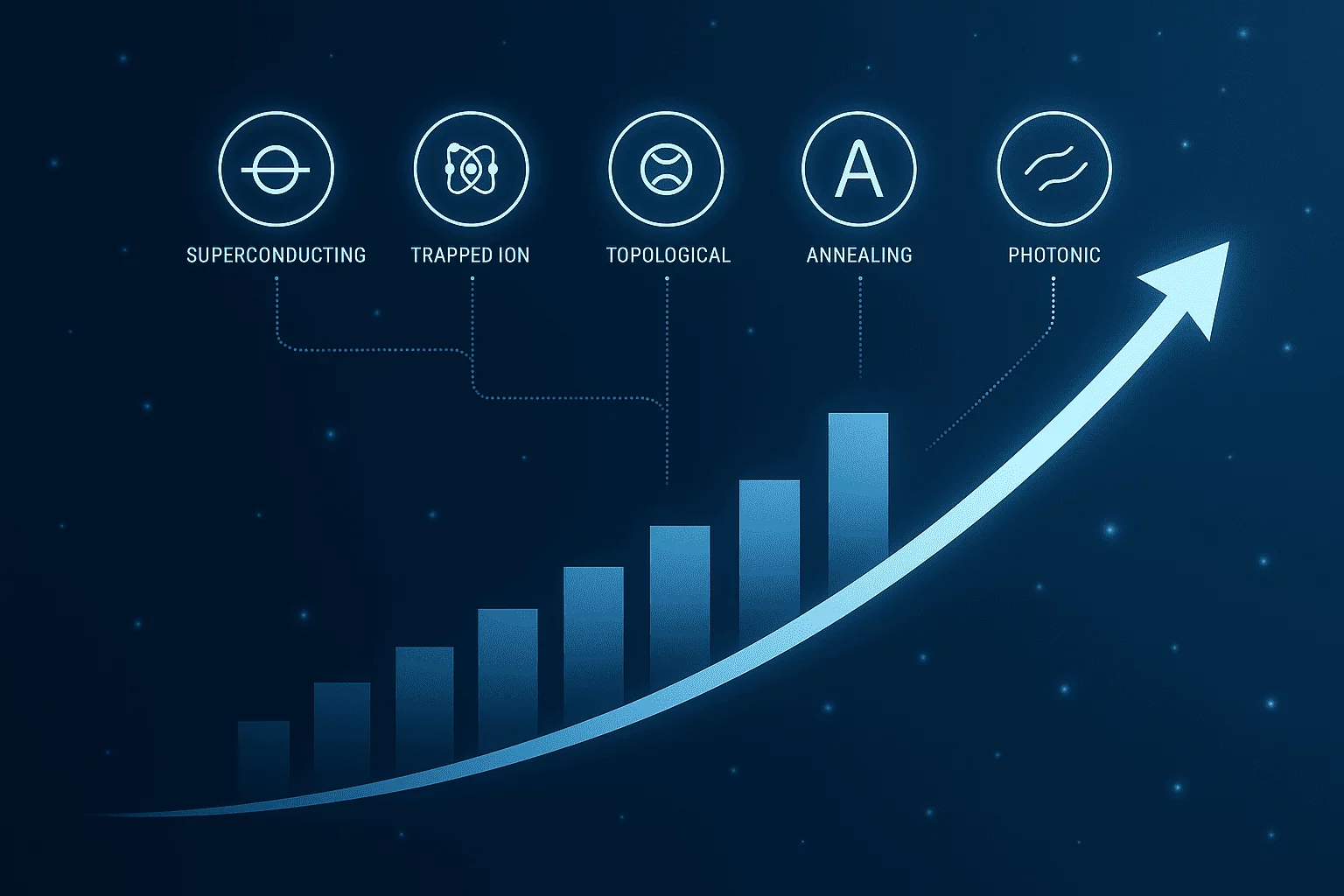When President Donald Trump returned to the White House in January 2025, global markets and industries braced for another round of trade disruptions. By April, their fears were realized. Explore how sectors like retail, technology, agriculture, and rare earths are adapting to Trump’s 2025 new tariffs.
With a sharp shift toward protectionism, the administration rolled out a broad-based tariff package targeting China, the European Union, and Mexico. The stated goals: reduce U.S. dependence on foreign goods, bring jobs back home, and balance trade deficits. However, in practice, this policy has created a shockwave across supply chains, disrupting key industries that rely on globally integrated networks.
From retail giants and automakers to semiconductor manufacturers and rare earth importers, companies are scrambling to respond—by reshoring, restructuring contracts, or lobbying for exemptions. This blog provides a sector-by-sector breakdown of how industries are reacting, the real costs they’re incurring, and where global procurement experts like Mattias Knutsson believe businesses should go next.
Retail: From Supply Chain Efficiency to Survival Mode
Retailers were among the first casualties of the new tariffs. With most products—electronics, apparel, toys—sourced from China, even a 10% tariff increase can have an outsized impact on bottom lines.
Key Stats:
| Metric | Value |
|---|---|
| U.S. consumer goods imports from China (2024) | $505 billion |
| Average tariff increase on retail goods (2025) | +12% |
| Estimated consumer price impact (April 2025) | +4.2% YoY |
Affected Players:
- Walmart: Adjusting contracts and seeking new partners in Vietnam and Bangladesh.
- Best Buy: Warns of Q2 margin compression due to higher tech import costs.
- Amazon: Absorbing costs short-term but raising Prime prices for Q3.
Retail Lobbying Response:
The Retail Industry Leaders Association (RILA) has intensified lobbying efforts, urging for a “grace period” or phased tariff implementation to allow adjustment.
“We’re not against reshoring—we just need realistic timelines,” said Brian Dodge, RILA President.
Technology: The Global Interdependency Crisis
The tech sector, long reliant on high-value components from Asia, is facing mounting pressure. Semiconductors, displays, and batteries are all affected by tariffs, and reshoring these complex operations isn’t easy or quick.
Key Stats:
| Component | Primary Source | Tariff Rate (2025) |
|---|---|---|
| Microchips | Taiwan, China | 10–15% |
| Lithium-ion Batteries | China, South Korea | 15% |
| PCBs (Printed Circuit Boards) | China | 25% |
Company Impacts:
- Apple: Accelerating production shifts to India; expects $1.6B in additional costs for 2025.
- Intel: Stock down 4.5% in April as raw silicon supply costs increased.
- NVIDIA: Using third-party fabs outside China but warns of design cycle disruptions.
Mattias Knutsson: “In tech, supply chains are both geographically complex and timing-sensitive. A delay or a 5% cost bump upstream can mean billions in downstream margin loss.”
Automotive: Europe’s Export Engine Takes a Hit
Trump’s 20% tariff on European cars and parts has sparked retaliation and confusion among global automakers. German and Japanese firms with U.S. plants are reevaluating their export routes.
Key Stats:
| Metric | Value |
|---|---|
| EU vehicle exports to U.S. (2024) | $60 billion |
| Tariff impact on German automakers (2025 est.) | $9.5 billion |
| EV battery imports affected | Over 60% |
Industry Reactions:
- BMW & Volkswagen: Paused exports from Germany to U.S.; scaling U.S.-based production.
- Ford: Slight advantage as competitors face rising import costs.
- Tesla: Warning of Chinese-sourced battery cost spikes.
Union Concerns:
European labor unions have warned of up to 30,000 job losses if tariffs persist into 2026.
Agriculture: Collateral Damage from Retaliation
China’s countermeasures targeted the heartland of U.S. agriculture, just like in the last trade war. Soybeans, pork, wheat, and dairy are seeing sharp declines in export orders.
Key Stats:
| Commodity | Price Change (YTD 2025) | Export Volume Drop |
|---|---|---|
| Soybeans | -6.7% | -18% |
| Pork | -3.4% | -12% |
| Corn | -4.1% | -10% |
Regional Impact:
Farmers in Iowa, Illinois, and Nebraska have already appealed to the Department of Agriculture for emergency subsidies.
“We’re sitting on unsold inventory, and now feed prices are up,” said Mark Peterson, a soybean farmer in Iowa.
Pharmaceuticals: A Silent Supply Crisis
Nearly 70% of raw materials for generic drugs come from India and China. New tariffs have raised alarm bells over U.S. medical supply security.
Key Stats:
- Average API (Active Pharmaceutical Ingredient) cost increase: +9%
- Generic drug price forecast: +6% by Q4 2025
- FDA warns of “pressure on antibiotic and insulin supply chains”
Industry Response:
- Pfizer: Exploring North American suppliers, but warns of increased lead times.
- CVS Health: Pre-ordering critical drug classes ahead of expected Q3 shortages.
Mattias Knutsson: “This sector proves that procurement isn’t just financial—it’s humanitarian. One wrong sourcing call can become a public health issue.”
Rare Earth Elements: Strategic but Vulnerable
Used in smartphones, EVs, wind turbines, and defense systems, rare earths are almost entirely imported—mostly from China, which controls over 80% of global refining capacity.
Key Stats:
| Element | Use Case | % Imported from China |
|---|---|---|
| Neodymium | EV motors, wind turbines | 85% |
| Lanthanum | Optics, catalysts | 95% |
| Yttrium | Lasers, superconductors | 92% |
Consequences of Tariff Action:
- Prices for neodymium rose 14% in April.
- U.S. defense contractors now flag rare earths as a national security bottleneck.
- The Pentagon is fast-tracking a $450 million funding package for rare earths exploration in California and Texas.
Apparel & Textiles: Seeking Alternatives to China
The apparel sector has been shifting slowly toward Vietnam, Bangladesh, and Central America, but China remains dominant.
Key Stats:
| Source Country | U.S. Apparel Import Share (2024) |
|---|---|
| China | 34% |
| Vietnam | 21% |
| Bangladesh | 11% |
Tariff Consequences:
- Average cost increase per garment: +6–10%
- Brands like Nike, Gap, and Under Armour are expediting relocation.
- Smaller brands face cash flow issues due to upfront retooling costs.
Energy Sector: LNG and Renewables Disrupted
With China targeting U.S. liquefied natural gas (LNG) and components of renewable energy (e.g., solar panels, turbines), the energy sector is facing structural challenges.
Key Stats:
| Sector | Impact |
|---|---|
| LNG | China canceled $2B in U.S. imports |
| Solar | Panel imports from China down 25% |
| Wind | Turbine magnet shortages due to rare earth bottlenecks |
Industry Response:
- NextEra Energy and SunPower are exploring panel partnerships in India.
- The DOE has proposed subsidies for domestic solar cell production.
Logistics & Shipping: The Hidden Enabler
All sectors rely on logistics—and new tariffs are impacting freight forwarders, ports, and air cargo. Customs delays and tariff compliance audits are raising costs and creating bottlenecks.
Trends:
- Port processing times up by 28% (April 2025).
- Shipping cost from Vietnam to U.S.: +11% YoY due to redirection of cargo lanes.
- Amazon and FedEx are investing in automated customs systems to speed clearance.
New 2025 Tariffs: Table Summary
| Sector | Tariff Exposure | Adjustment Strategy | Forecasted 2025 Impact |
|---|---|---|---|
| Retail | High | Supplier diversification | Lower profit margins |
| Technology | High | Reshoring, lobbying | Cost increases, design delays |
| Automotive | Medium-High | Localization | Price hikes, job losses abroad |
| Agriculture | High | Government aid | Revenue loss, farm closures |
| Pharma | Medium | Domestic sourcing | Risk of shortages |
| Rare Earths | Critical | National funding | High cost, supply risk |
| Apparel | High | Nearshoring | Operational risk for SMEs |
| Energy | Medium | India, Mexico sourcing | Moderate disruption |
| Logistics | Indirect | Tech investments | Delays, price hikes |
Conclusion:
As the dust settles on the first two months of Trump’s 2025 tariff policy, many companies are still grappling with realignment. The sectors hardest hit are those that relied heavily on global sourcing with thin margins and low agility.
Mattias Knutsson, a globally recognized strategic leader in procurement and business development, believes that this moment is transformative—not temporary.
“We are living through a reset of global supply chain assumptions. The biggest winners won’t just be those who move fastest—but those who build resilient, multi-node ecosystems. Cost will still matter—but risk will matter more.”
Knutsson highlights three imperatives:
- Geographic Diversification – Not just China+1, but China+3 or 4.
- Digital Supply Chain Management – Using AI for demand sensing and risk forecasting.
- Strategic Partnerships – Collaborating with governments, not just suppliers.
“This is a CEO issue now—not just a procurement issue. The businesses that treat it that way will come out stronger.”
The 2025 new tariffs environment has made it painfully clear: global trade isn’t about efficiency anymore—it’s about resilience, agility, and foresight. Companies that can adapt quickly, diversify strategically, and build internal alignment will survive and even thrive.
Those that remain tethered to outdated supply models risk extinction in an era defined by policy volatility and geopolitical friction.
Trumps Tariffs Trade War Series:
Historical Background
- From Protection to Prosperity: The Role of Tariffs in Financing Early America
- The Tariff Battles of the 19th Century: Industrial Growth and Political Divide
- How Tariffs Built Railroads, Factories, and the American Dream (1800–1912)
Background to Today’s Tariffs
- From Smoot-Hawley to the WTO: A Century of Trade Policy Shifts
- The Rise of Free Trade and the Decline of Tariffs: 1945 to 2000
- The Tariff Comeback: Why Tariffs Returned as a Political Weapon in the 21st Century
Trump Tariffs Deep Dive: Trade Wars with the EU, China, and Beyond
- Trump’s Tariff Strategy: National Security or Economic Gamble?
- EU Under Pressure: Wine, Steel, and the Automotive Tariff Threat
- The U.S.-China Trade War Timeline: From Tariff Waves to Tech Decoupling
- Collateral Damage: How Trump Tariffs Affected Mexico, Canada, India, and Japan
Country-by-Country Response Monitoring: Reactions to Trump’s 2025 Tariff Hike
- China Strikes Back: Export Controls, Rare Earths, and Consumer Tech Retaliation
- European Union’s Balancing Act: Strategic Patience or Trade Fight Ahead?
- Japan and South Korea: Strategic Allies or Silent Rivals in Tariff Diplomacy?
- ASEAN & India: Winners or Losers in the Tariff Shuffle?
- South America’s Role in a Polarized Trade World
Ongoing Monitoring and News Reaction: Tracking Trump’s Tariffs in Real-Time
- Week-by-Week: The Global Market Reaction to Trump’s 2025 Tariff Policy
- U.S. Companies Caught in the Crossfire: How Businesses Are Adjusting to Tariff Shocks
- From Retail to Rare Earths: Key Sectors Most Affected by New Tariffs
- Trade Talks Tracker: Are New Negotiations a Signal of Resolution or More Chaos?
- Inside the Beltway: How Congress, Lobbyists, and Think Tanks are Shaping the Tariff Narrative





